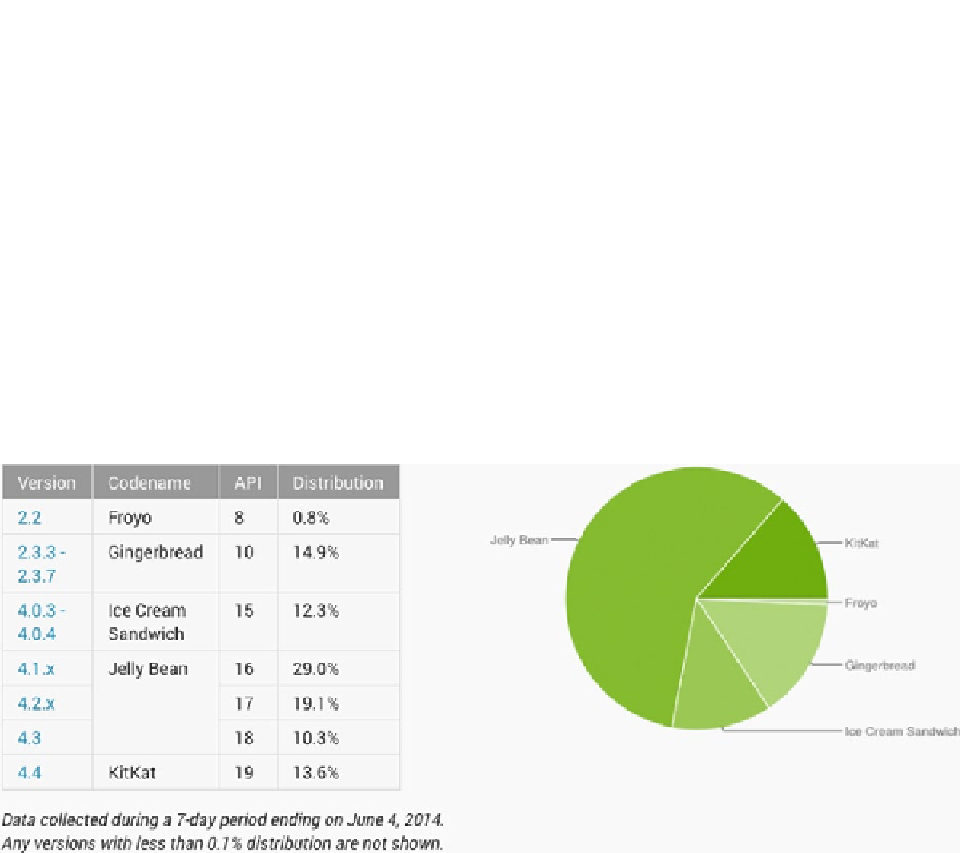Game Development Reference
In-Depth Information
The two most popular mobile platforms, Apple and Android, take different approaches. Apple is
a closed-source operating system engineered by Apple that works on devices manufactured by
Apple. Android is an open-source operating system engineered by Google and used by a number of
different device manufacturers. When a newer version of an operating system is released, depending
on its processing capability older devices may or may not be capable of supporting the newer
operating system's features.
Apple generally has only a few iPhone or iPad devices on the market at any given time, and its users
adopt operating system upgrades at a greater than 90% rate within a few months. Android users
own devices from a number of different manufacturers that have different capabilities at any given
time. With manufacturers adding new devices over time, while some users hold on to their older
devices, you have a much broader range of capability within the Android mobile device category,
especially when you consider that Android users have a less consistent adoption rate of newer
versions of Android (Figure
12-1
), older versions of which may or may not support certain features
you would like in your game.
Figure 12-1.
Relative number of devices running on a given version of the Android platform
You must take this information into consideration depending upon how much of the Android mobile
device market you wish to target, which in turn guides where you will set your target performance
frame rate. All of this decision making takes place early on in the game design phase.
Tracking Your Target
In the Unity editor, run the Obstacle Course scene. In the Game View top menu, you will find a Stats
button. Click this and an overlay of various performance statistics will appear, including the FPS
(Figure
12-2
).

